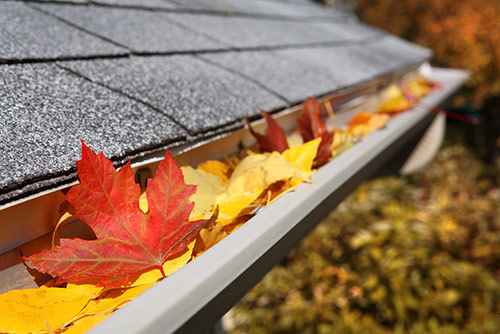Now that fall is officially here, it’s time to prepare your home for cold weather. These steps, most of which you can do yourself, will lower your utility bills and protect your investment.

1. Tune up your heating system, a technician will inspect your furnace or heat pump to be sure the system is clean and in good repair, and that it can achieve its manufacturer-rated efficiency. The inspection also measures carbon-monoxide leakage.
If you act soon, you’ll minimize the chance of being 200th in line for repairs on the coldest day of the year. Look for a heating and air-conditioning contractor that belongs to the Air Conditioning Contractors of America and employs technicians certified by the North American Technician Excellence (NATE) program. The contractor should follow the protocol for ACCA’s “national standard for residential maintenance” (or the QM, short for “quality maintenance”).
2. Reverse your ceiling fans. If your ceiling fan has a reverse switch, use it to run the fan’s blades in a clockwise direction after you turn on your heat. Energy Star says the fan will produce an updraft and push down into the room heated air from the ceiling (remember, hot air rises). This is especially helpful in rooms with high ceilings — and it might even allow you to turn down your thermostat by a degree or two for greater energy savings.
3. Prevent ice dams.If your home had lots of icicles last winter — or worse, ice dams, which can cause meltwater to back up and flow into your house — take steps to prevent potential damage this year. A home-energy auditor or weatherization contractor can identify and fix air leaks and inadequate insulation in your home’s attic that can lead to ice dams. If you have the work done before December 31, 2011, you can claim the federal energy-efficiency tax credit for 10% of the cost (excluding installation), up to $500. Your state or utility may offer a rebate, too.
4. Have your roofed inspected by a team of certified professionals to look for possible leaks, missing or damaged shingles or hail damage.
5. Caulk around windows and doors. Richardson says that if the gaps between siding and window or door frames are bigger than the width of a nickel, you need to reapply exterior caulk. (Check the joints in window and door frames, too.) Silicone caulk is best for exterior use because it won’t shrink and it’s impervious to the elements. Try GE’s Silicone II Window and Door product, which is “rain ready” in three hours ($6 at Home Depot). Check window-glazing putty, too (which seals glass into the window frame). Add weatherstripping as needed around doors, making sure you cannot see any daylight from inside your home.
6. Clean the gutters. If your gutters are full of detritus, water can back up against the house and damage roofing, siding and wood trim plus cause leaks and ice dams.
7. Divert water. Add extensions to downspouts so that water runs at least 3 to 4 feet away from the foundation, says David Lupberger, home-improvement expert for ServiceMagic, which connects consumers with service providers.
8. Turn off exterior faucets. Undrained water in pipes can freeze, which will cause pipes to burst as the ice expands. Start by disconnecting all garden hoses and draining the water that remains in faucets. If you don’t have frost-proof faucets (homes more than ten to 15 years old typically do not), turn off the shut-off valve inside your home.
9. Drain your lawn-irrigation system. But call in a professional to do the job. Draining sprinkler-system pipes, as with spigots, will help avoid freezing and leaks.
10. Mulch leaves when you mow. Mow your leaves instead of raking them, say studies at the University of Michigan and Purdue. The trick is to cut the leaves, while dry, into dime-sized pieces that will fall among the grass blades, where they will decompose and nourish your lawn over the winter.
12. Don’t prune trees or shrubs until late-winter. You may be tempted to get out the pruning shears after the leaves fall, when you can first see the underlying structure of the plant. But horticulturalists advise waiting to prune until late winter for most plants, when they’ve been long dormant and just before spring growth begins. To get advice specific to your plants and region, consult master gardeners at local nurseries or horticulturalists with your state university’s cooperation extension department. One exception: You may need to hire an arborist to remove deadfall or trim limbs close to your home or power lines that could cause problems in a winter storm.
13. Test your sump pump. Slowly pour several gallons of water into the sump pit to see whether the pump turns on. You should do this every few months, but especially after a long dry season or before a rainy one. For more complete instructions for testing and maintenance, check your owner’s manual.













